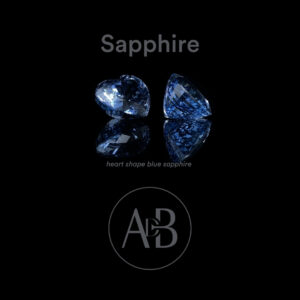Blue Sapphire
This Sapphire is transparent blue corundum and is generally classified as one of the most valuable gemstones along with ruby. The name comes from the Greek sappheiros and means blue. The name used to be used for many other stones with a blue color. In the Middle Ages, sapphire was understood to mean, for example, the present day lapis lazuli. It is only from 1800 that the name is used for the blue variety of corundum, a color caused by traces of iron and titanium.
But corundum of a gem quality with a color other than blue or red is also called sapphire. For example, in addition to blue sapphires, there are also colorless, yellow, pink, violet and green sapphires. In addition, there are multicolored sapphires.
Top quality sapphire has a cornflower blue color. This is generally worth more than the differently colored sapphires. Only the orange-yellow padparadscha sapphire is an exception, due to the fact that this variation is very rare, which automatically makes the stone more precious.
Sapphire is a tough and durable gem, and the only natural gemstone harder than Sapphire is diamond. Despite this, Sapphire is still subject to chipping and fracture if handled roughly, and care should be taken to ensure it is properly handled.
Sapphire was first synthesized in 1902. The process of creating synthetic Sapphire is known as the verneuil process. Only experts can distinguish between natural and synthetic Sapphire.

